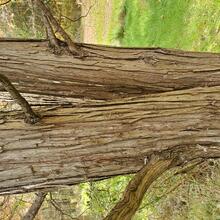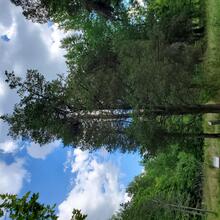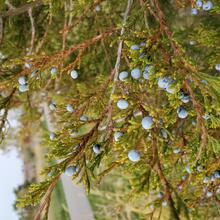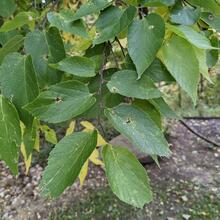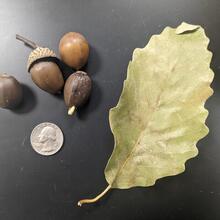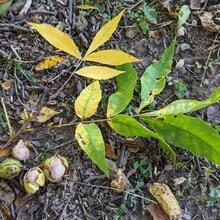Juniperus virginiana
Cupressaceae
More commonly grows on calcareous soils in Southwestern portion of Ohio. Useful for erosion control and as a windbreak. Tolerates wide range of soil conditions. Occasionally browsed by deer.
Summary
 Climate Tolerance
Climate Tolerance
NA
Wildlife Benefits
Cones/berries food source for songbirds (e.g. Cedar waxwing), gamebirds, mammals; winter cover for birds
Pollination Type
Wind
Plant Hardiness Zones
2 to 9
# Butterfly/Moths that use as host
28
Bloom Time
Spring (Mar-May)
 Shade/Sun Tolerance
Shade/Sun Tolerance
Full Sun to Shade: Receives less than 2 to 6 or more hours of direct sunlight
 Maximum Height
Maximum Height
Small (15-40 ft)
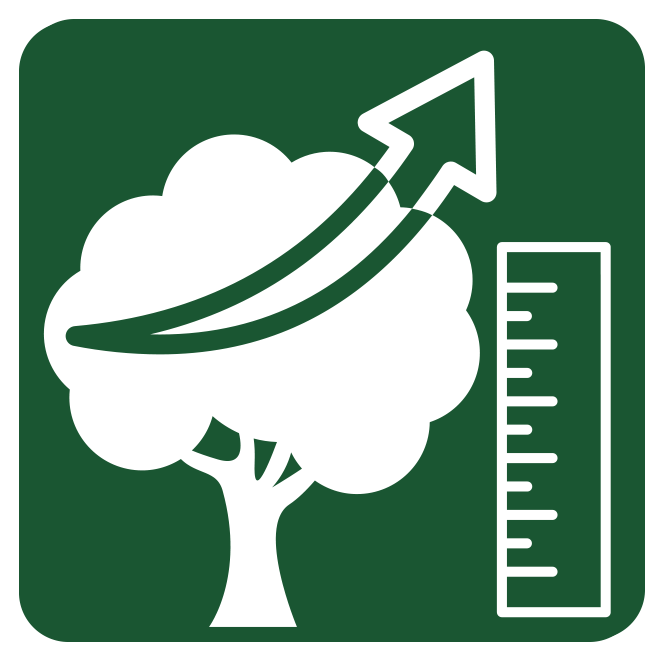 Growth Rate
Growth Rate
Slow: 1 ft or less per year
 Soil Type
Soil Type
Clay: Small sized particles. Long moisture retention and low nutrient availability.
Loam: Equal mix of clay, sand, and silt. Moderate moisture retention and high nutrient availability.
Sand: Large/coarse particles. Short moisture retention and low nutrient availability.
Rocky: Large pieces of gravel and rock. Short moisture retention and low nutrient availability.
 Soil Moisture Tolerance
Soil Moisture Tolerance
Dry: Soil normally retains little to no water
Root - Fungal Association
Arbuscular mycorrhizae: Symbiotic relationship with fungi that exist on inside of plant root cells, facilitating nutrient uptake
Pest & Pathogen Risks
Medium; cedar-apple rust (should not be planted near apples/hawthorns)
 Urban Stress Tolerance
Urban Stress Tolerance
High: Tree can adapt to a variety of urban conditions and will grow well
Drought Tolerance
Tolerant: Tree will not become stressed during periods of drought
Coefficient of Conservatism
3
Native Status
OH-Native: Species is native to Ohio
NatureServe G-rank
G5
Plant Community Type
- Beech Mixed: Absent
- Oak Mixed: Rare
- Alluvial: Absent
- Red Maple Mixed: Absent
- Ruderal: Absent
- Urban Tree Cover: Common
Bloom Color
Brown
Green
Purple
Form
Tree
 Lifespan
Lifespan
Medium: 100-250 years
Soil pH
Acidic (pH<6.8)
Wetland Indicator Status
FACU: Facultative Upland, usually occurs in non-wetlands, but may occur in wetlands
Soil Compaction Tolerance
Tolerant: Tree will not become stressed from soil being compacted
Heat Tolerance
Tolerant: Tree will not become stressed for increased temperature due to urban heat island effects
Salt Tolerant
Tolerant: Tolerant to both aerial salt spray and salt present in soil
Native County Status
Cuyahoga
Geauga
Lake
Lorain
Medina
Portage
Summit
IUCN Red List Assessment
Least Concern
